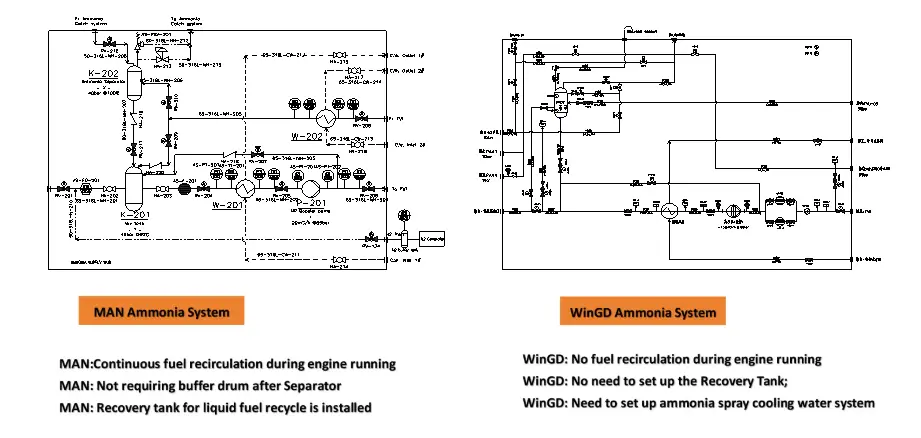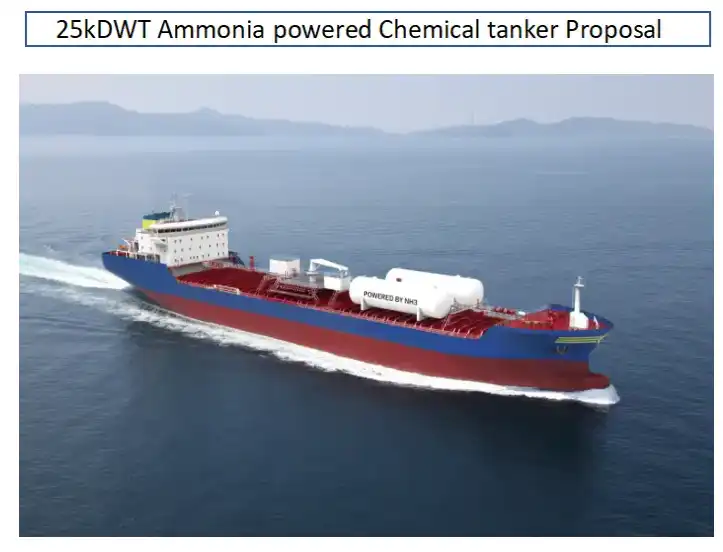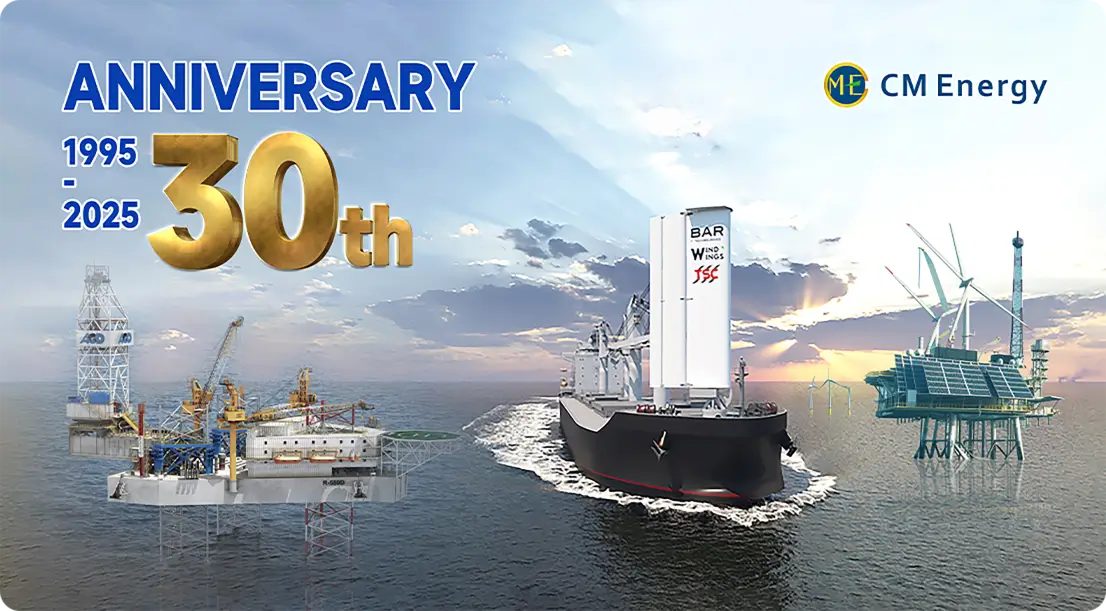Ammonia Fuel Transfer Infrastructure
Overview of the Ammonia Fuel Transfer Infrastructure
The Ammonia Fuel Transfer Infrastructure is composed of several essential components, which include the filling and storage system, the Ammonia Fuel Supply System (AFSS), the Fuel Value Unit (FVU), the venting system, the Ammonia Release Management System (ARMS), the ventilation system, the inert gas system, the internal ammonia fuel system for the engine, and the safety system. It is crucial to highlight that there are significant distinctions between the systems utilized by MAN and WinGD.

Why Choose Us?
1. Unmatched Industry Expertise – Our team possesses extensive experience in designing and constructing dual-fuel vessels, liquefied gas carriers, chemical tankers, and their associated systems, thereby maintaining a leadership role within the industry.
2. Comprehensive Service Portfolio – We provide end-to-end solutions encompassing Methanol Fuel Supply Systems (MFSS), LNG Fuel Supply Systems (FGSS), Ammonia Fuel Supply Systems (AFSS), and LPG Cargo Handling Systems (CHS), all conveniently available under one roof.
3. Established Delivery Excellence – With a record of 19 successful installations of clean fuel supply and cargo handling systems, we have built a strong reputation for reliability and quality.
4. Innovative AFSS Development – Capitalizing on our robust expertise in ammonia carrier construction and LPG system retrofits, we independently develop ammonia fuel supply systems and actively engage in zero-carbon research initiatives.
5. Comprehensive Lifecycle Service – Our support covers every phase of the project lifecycle—from initial design through manufacturing and final installation—continuing into the construction of multiple units and offering robust post-sales service.
Product Specifications

Product Features
1. Safety and Efficiency – This Ammonia Fuel Transfer Infrastructure guarantees safe and efficient bunkering as well as storage of ammonia, fully adhering to regulations governing low-flashpoint fuels and specifically designed to satisfy IMO standards and industry requirements for ammonia as a marine fuel.
2. Flow Control and Safety Mechanisms – The system provides precise control over ammonia flow, ensuring safe operation. It includes advanced safety features such as leak detection, emergency shutdown systems, and integration with inert gas systems.
3. Environmental Protection – Designed to minimize environmental risks, this system captures and treats ammonia vapor. It integrates thermal oxidation or re-liquefaction systems for the safe handling of ammonia, particularly in low-pressure storage tanks.
4. Ventilation and Risk Reduction – By ensuring adequate ventilation both above-deck and in enclosed spaces, the system incorporates inert gas solutions that help mitigate explosive risks in hazardous areas.
5. Pressure Control – To maintain safe pressure levels in low-pressure storage tanks, the system includes re-liquefaction or sub-cooling units alongside thermal oxidation systems for effective management of ammonia vapor.

Installation Process
1. Confirm Vessel Design – Begin by reviewing and confirming the vessel design drawings along with the interface requirements for the system, ensuring that all technical clarifications are properly addressed during this phase.
2. Installation Preparation – Prepare all necessary tools, equipment, and safety measures in advance.
3. Component Transportation – Transport the prefabricated fuel supply system module to the installation site, using suitable lifting equipment to accurately position it in the designated area.
4. Module Securing – Secure the base of the module to the ship's structure, verifying its stability and correct alignment according to design specifications.
5. System Connections – Connect the transfer pipelines, auxiliary system piping, and control cables, making sure that all seals and electrical systems function correctly.
6. System Debugging – Carry out both individual and integrated debugging of the fuel supply system, confirming the operational performance of subsystems, which include bunkering, supply, and safety control functions.
For more product information about Ammonia Fuel Transfer Infrastructure, please leave a message below.

